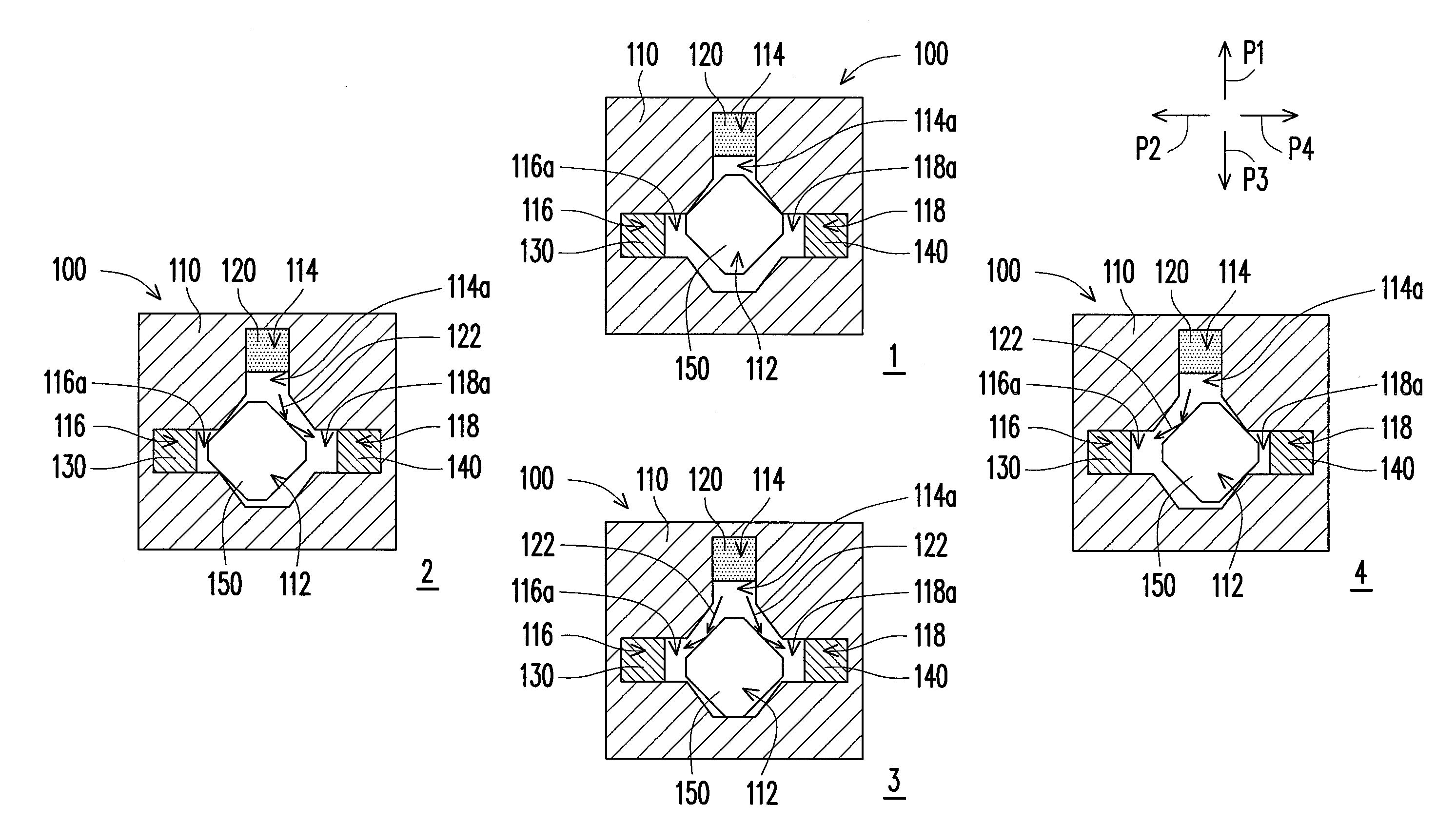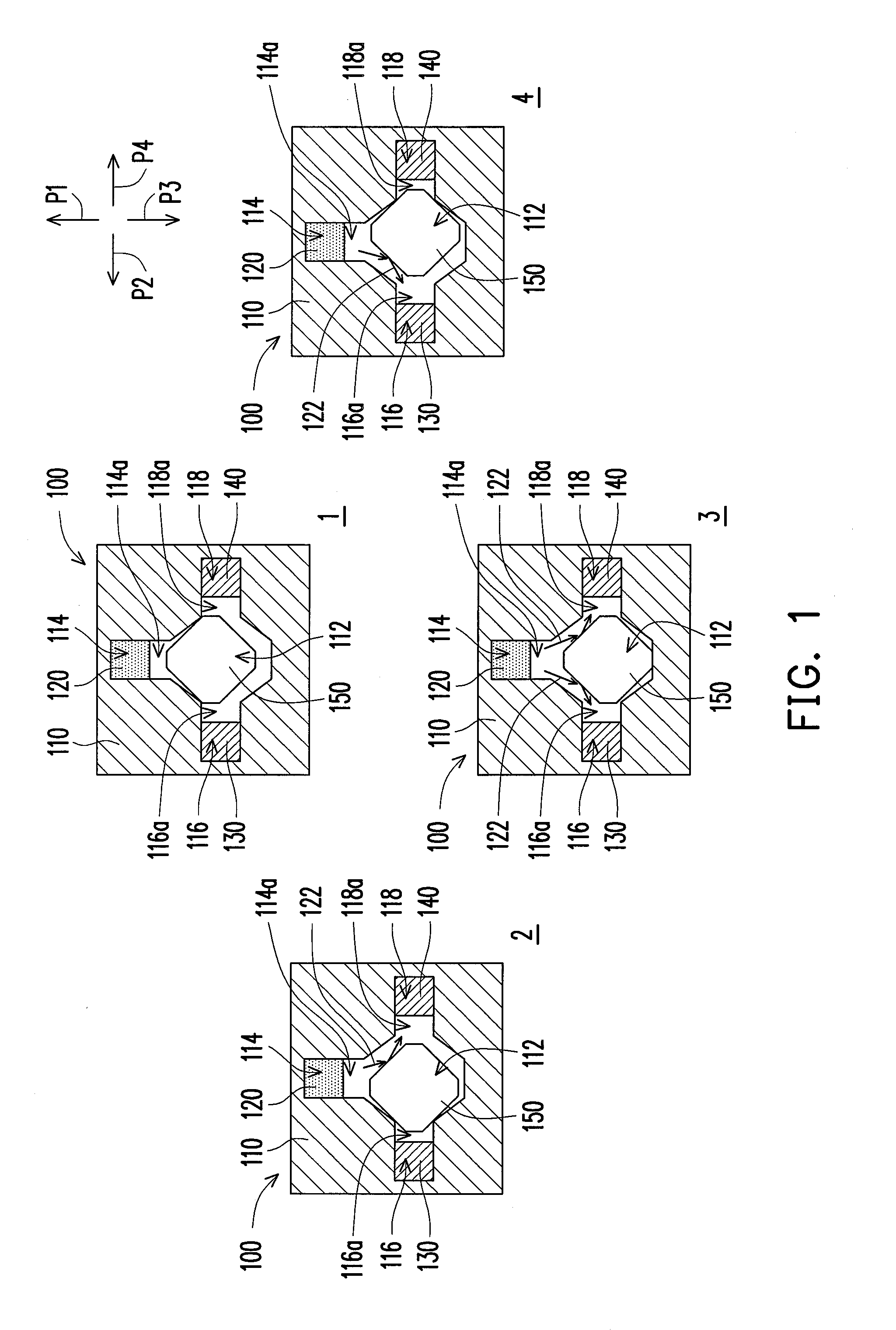Tilt sensor
- Summary
- Abstract
- Description
- Claims
- Application Information
AI Technical Summary
Benefits of technology
Problems solved by technology
Method used
Image
Examples
Embodiment Construction
[0023]FIG. 1 is a schematic view illustrating a tilt sensor configured to sense different tilt directions in accordance with an embodiment of the invention. Referring to FIG. 1, a tilt sensor 100 according to the present embodiment includes a body 110, a light emitting device (LED) 120, a first photosensitive device 130, a second photosensitive device 140, and a moving thin-element 150.
[0024]The body 110 is suitable for tilting in a plurality of directions P1, P2, P3, and P4. The body 110 includes a movement region 112, a first containing region 114, a second containing region 116, and a third containing region 118. In particular, the first containing region 114 has a first opening 114a, and the first containing region 114 is connected with the movement region 112 through the first opening 114a. The second containing region 116 has a second opening 116a, and the second containing region 116 is connected with the movement region 112 through the second opening 116a. The third containi...
PUM
 Login to View More
Login to View More Abstract
Description
Claims
Application Information
 Login to View More
Login to View More - R&D Engineer
- R&D Manager
- IP Professional
- Industry Leading Data Capabilities
- Powerful AI technology
- Patent DNA Extraction
Browse by: Latest US Patents, China's latest patents, Technical Efficacy Thesaurus, Application Domain, Technology Topic, Popular Technical Reports.
© 2024 PatSnap. All rights reserved.Legal|Privacy policy|Modern Slavery Act Transparency Statement|Sitemap|About US| Contact US: help@patsnap.com









